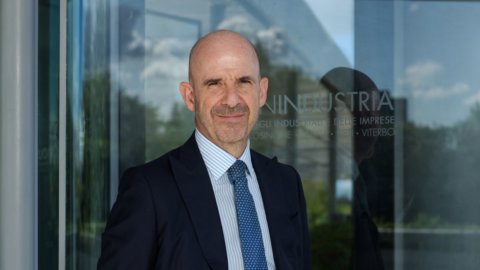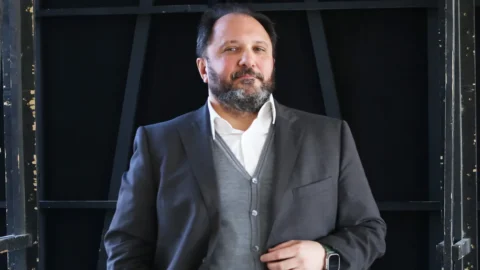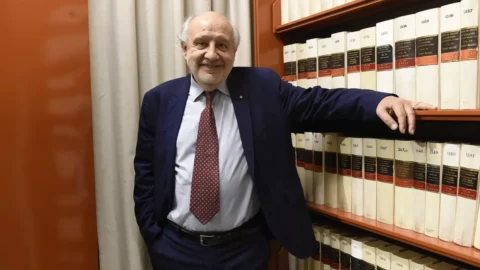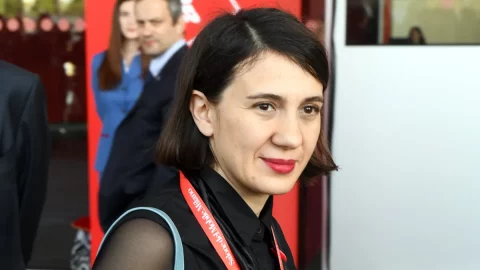The Russia-Ukraine war, with its alarming human consequences, is the first concern of the companies of Rome and Lazio and forces them to deal with the risks that the industry of the capital and the surrounding region runs, but it does not erase the desire for the future and the unique opportunity that Rome and Lazio have before them both for the opportunity offered by the PNRR and for a series of exceptional events ranging from the Jubilee to the possible Expo 2030. We talk about all this in the interview granted at FIRSTonline, with the President of Unindustria Lazio, Angelo Camilli, who summarizes the anxieties of the present but also the projects for the future of a significant part of industry and of Italy, such as Rome and Lazio, which senses and dreams of a change its development and modernization.
President Camilli, the world is experiencing times of war that were unthinkable until a few days ago and, in addition to all possible help for the Ukrainian pole, unfortunately we also need to do some calculations: how much war weighs on Lazio industry and in particular on export and import?
We are witnessing an alarming scenario in these hours. Russia's military aggression is unjustifiable and we are very concerned about the humanitarian consequences that the conflict is already generating. The price paid in terms of human lives is already very high after a few days of conflict: this is the most alarming fact to consider. Obviously, our work also requires us to quantify the possible repercussions that the war will have on the Italian and Lazio industrial system. In fact, Russia accounts for 2,1% of our region's exports (against Italy's 1,6%) and 2,5% of imports (3,4% of Italy). Lazio's exports to Russia are mainly concentrated in two sectors: pharmaceuticals (313 million € in 2019 out of a total of 13,3 billion €, corresponding to 2,4%) and aerospace (60 million in 2019, 4% of total exports aerospace of Lazio; 186 million in 2020, 15% of the total); while the import mainly on metallurgy. In this sector, goods for €632 million come from Russia, equal to 29% of all Lazio imports of metallurgical products. This is a particularly important sector for Lazio, since it represents the third largest export item in Lazio after pharmaceuticals and chemicals.
Such an unstable geopolitical situation could have significant impacts on the exchange of products and, in particular, have an even more negative impact on energy prices, which are already in a critical situation for businesses and households.
In 2021, the Italian economy experienced a 6,6% GDP rebound that we have not seen since 1976 and forecasts for 2022 also speak of a possible 4% GDP growth: in this context, how does Lazio and , as Unindustria Lazio, what forecasts do you make for the current year?
We come from an intense recovery phase of the Italian economy recorded in 2021, nevertheless, worries are growing for the current year due to the strong increase in commodity prices, which seriously jeopardizes the GDP recovery path started last year. As far as our Region is concerned, the Prometeia forecasts of last January indicate a sustained growth rate for 2021, around 6%, just below the national average (6,5%). A result which - if confirmed, as we hope - should be considered very positive for Lazio, especially taking into account that in 2021 the contribution of a fundamental sector such as tourism was lacking. All of this also demonstrates that an important part of our production fabric has been able to fully grasp the recovery in domestic and international demand.
What are the main strengths and what are the critical points of Lazio's industry and services today?
The robust recovery of our exports has contributed to confirming what have always been points of excellence in our Region. Lazio is the Italian region with the highest production specialization in high-tech and knowledge-intensive sectors: 7,8% of employees are employed in "High-technology manufacturing industries" and in "High-tech knowledge-intensive services" ”. We are also the first Region for number of universities, with 13 of the 87 universities present on the national territory and Rome is the first province with 11 universities. Our capital hosts the headquarters of primary research centers and public institutions and Lazio is home to 35% of research workers in Italian public institutions (excluding universities) and 43% of spending. One of the main production centers of European pharmaceuticals is located in Lazio, which has 107 companies for 12.300 employees (Istat, 2019); Italy (together with Germany) is the leading producer of pharmaceuticals in Europe, and 38% of national exports in the sector come from the Lazio region. Without forgetting cinema and audiovisual where, with 27% of companies and 41% of employees, Rome is the Italian cinema hub; or ICT where Lazio is the first region for the export of ICT services (4 billion euros in 2020, 48% of the national total) and the region with the highest concentration of companies in the Cybersecurity sector (680 companies out of a total of 3.000). However, there are critical issues that risk holding back the growth of our Region, in particular a non-homogeneous infrastructural framework and with strategic works that have been expected for too long: the fate of the Rome-Latina motorway, the prolonged story of the closure of the Rome ring and the conditions of the Salaria are some significant examples. Added to this is also an often slow and cumbersome authorization bureaucracy which makes the contextual framework for new investments more uncertain. In addition to this, in the last period the companies of Lazio are also dealing with the increases in energy prices, especially some particularly energy-intensive sectors such as ceramics. Some analysts have estimated the additional economic outlay of Lazio companies in 2,2 at 2022 billion euros, out of the over 30 billion for Italian companies.
Beyond the war emergency, how much do the exploits of high energy costs and the bottlenecks that hinder growth throughout the country weigh on companies in Lazio?
Among our companies, the problem of the sharp increase in energy costs is increasingly felt, as are the prices and scarcity of raw materials and intermediate inputs. The surge in energy costs in Lazio affects all sectors but in particular Metallurgy, Automotive, Ceramics, Chemistry, Transport, Paper and Printing. We are talking about unsustainable costs, especially for manufacturing companies, also in terms of competitiveness. This is a topic of great importance given that the price of energy is not destined to fall back in the short term, but will drop very slowly to return to "normal" levels after 2023, and all this is conditioned by the alarming geo- political triggered by Russia, from which almost half of the gas for the EU comes.
Despite the strong growth in 2021, the unemployment rate remains high and the difficulty of bringing supply and demand together remains strong, if it is true as it is true that in the face of large pockets of unemployment, in many industrial and service areas there is no necessary personnel: how are things in Lazio?
From our recent survey, we found that a significant share of associated companies, 42%, is experiencing difficulties in recruiting some professional figures who are central to the ecological and digital transition processes: in particular engineers, in the various specializations, developers and computer scientists, chemical experts. Like Unindustria we are also focusing a lot on ITS, Higher Technical Institutes. In fact, we have set up the ITS Meccatronico del Lazio Foundation which was born from the need of some companies in the Frosinone and Lower Lazio area to strengthen technical-specialist training in the mechanical and mechatronic fields and to develop skills closely related to the professional needs expressed by companies for the development of local competitiveness, promoting the employment of young people at the end of the training course. In particular, the automotive, aerospace and electrical and electronic components sectors require increasingly qualified professionals characterized by specific and advanced skills for the management and maintenance of complex and connected mechatronic systems. But in reality the profile of the Mechatronic Technician is transversal and therefore required by all sectors. As Unindustria we therefore try to bring students closer to the productive world and contribute, with the ITS Meccatronico del Lazio, to the promotion and dissemination of technical and scientific culture and to the orientation of young people towards technical professions.
Despite the difficulties weighing on the entire economy, due to a series of exceptional facts and events - from the PNNR to the candidacy for Expo 2030 up to the Jubilee - a shower of resources is about to arrive in Lazio which makes these years a unique opportunity and perhaps unrepeatable to raise the growth potential of the Region and make it lasting: what does Unindustria propose, also in the light of the recent Assises, to make the best use of the incoming resources and to make Lazio companies make a real leap in quality?
A few days ago we organized a discussion with four hundred industrialists and managers behind closed doors, in which a climate of confidence in the future and a desire for recovery emerged, despite the concerns related to the current geo-political situation.
I have long been convinced that there are all the signs and conditions to talk about an important growth for Rome and Lazio. We have considerable funds from the Pnrr that will impact our city and our region, funds from community programming doubled for Lazio, major events that will give a new boost to tourism, from the 2025 Jubilee to the candidacy for Expo 2030; a series of good news and good prospects for our Region. There are many "starting points" on the horizon for Lazio and they all rhyme with big events. These international events, if well planned, will represent a very important growth opportunity. If we are able to spend these resources wisely, we will be able to recover the spark and momentum towards the future, which has been missing for some time. We must be able to seize this opportunity, know how to plan and make investments in the right time: this is the challenge that awaits us. In a few days we will leave as a Lazio business system at the Dubai Expo by participating in the mission organized by Mayor Gualtieri to present Rome's candidacy for Expo 2030. Later we will also be with the President of the Lazio Region Zingaretti to enhance, with our businesses , the strengths and excellence of the Lazio region.
In particular, on the PNRR what is the state of implementation in Lazio and what does Unindustria suggest to the Region, the local administrations and the Government to make the best use of the available resources to channel them towards a higher growth rate?
We have been insisting for some time on the theme of a particularly favorable economic situation for the capital in the coming years, mainly attributable to the positive effects of the PNRR, which could trigger higher growth rates in Rome than the Italian average (+2,5% compared to the Italian average in the three-year period 2021 -2024). Rome has big problems but today it has equally big opportunities. Thanks to a synergy and teamwork with the Region, local administrations and the Government, we are certain that Rome and all of Lazio will also be able to benefit from the completion of important infrastructural works that have been awaited for years. In fact, the completion of all the infrastructural projects of the Piano Italia Veloce which are worth around 8 billion euros for Rome and the construction of long-awaited works such as the closure of the railway ring, the continuation of line C and the doubling of the Salaria. And of course we also look at the works still pending which would also give great prominence to the international markets. Unindustria has always been convinced that, in order to support the regional economy, it will be important to intervene on the structural deficits that have never been overcome, starting with both intangible and tangible infrastructures such as the Rome-Latina, the Orte-Civitavecchia, the Cisterna-Valmontone link road and the capacity expansion of Fiumicino and also on the context conditions, starting from the tax burden, as primary factors of competitiveness of the territory. Of absolute importance for us is the upgrading of the Fiumicino airport and the Port of Civitavecchia, which finally became "Porto Core" in the context of the European legislative proposal to update the TEN-T network as "Port of the Capital" within the networks trans-European transport. Infrastructure that of Civitavecchia which continues to be the absolute protagonist in Italy, with the record of cruise passengers (second port of call in Europe after Barcelona) and the seventh in the world (2,7 million tourists in 2019), with the largest number of ships parked and which, with the new recognition in the TEN-T network and the opportunities deriving from the implementation of the Simplified Logistics Area, will also be able to focus on a significant increase in freight traffic.
His presidency is characterized by having proposed a series of special projects to mark a turning point in Lazio, in its economy, in its industry and in its services: perhaps the most attractive among these is the creation also in Rome of a Polytechnic which, as it already happens in Milan and Turin, you train the engineers that industry and more generally the Region needs at home. At what point is the project, where will it be based and when can we realistically think that the first courses will start?
A capital that attracts resources and talents with new ambitions looking above all at young people and innovation and that brings the skills of new graduates ever closer to the needs of businesses and emerging professional profiles. Precisely for this reason we have proposed the creation of a new university center for research, technology transfer and highly specialized training in scientific and international disciplines on Digital Transformation, Ecological Transition and Bio-pharmaceuticals and Health: the Rome Technopole. A project promoted and supported by the Lazio Region and the Municipality of Rome, in which the main public and private universities of the area are involved which also adhere to our Framework Agreement: La Sapienza, Tor Vergata, Roma Tre, Luiss Guido Carli, Campus Bio- Physician, University of Cassino and Southern Lazio, University of Tuscia. With the release of the MUR tender on "Territorial Innovation Ecosystems" using the funds of the PNRR, the opportunity arose to concretely start the project by detailing the research and teaching programs and finding the first important funding for the start-up of the first three years of activity: between 90 and 120 million. On February 24, the project proposal was presented to the MUR, also signed by about 40 companies, including large and small innovative companies. We await the outcome of the tender, but we believe that, in any case, the Rome Technopole project has solid foundations to go beyond and beyond the funds of the National Recovery and Resilience Plan, because it is now considered a strategic project for the future of the Region and the Capital.






dear president
Rome cannot fail to have a Financial City (EUR as localization). Services and conditions that create interest in having the headquarters of multinationals. Leaving the former Sky headquarters in Via Salaria and finding yourself in that degradation is crazy.